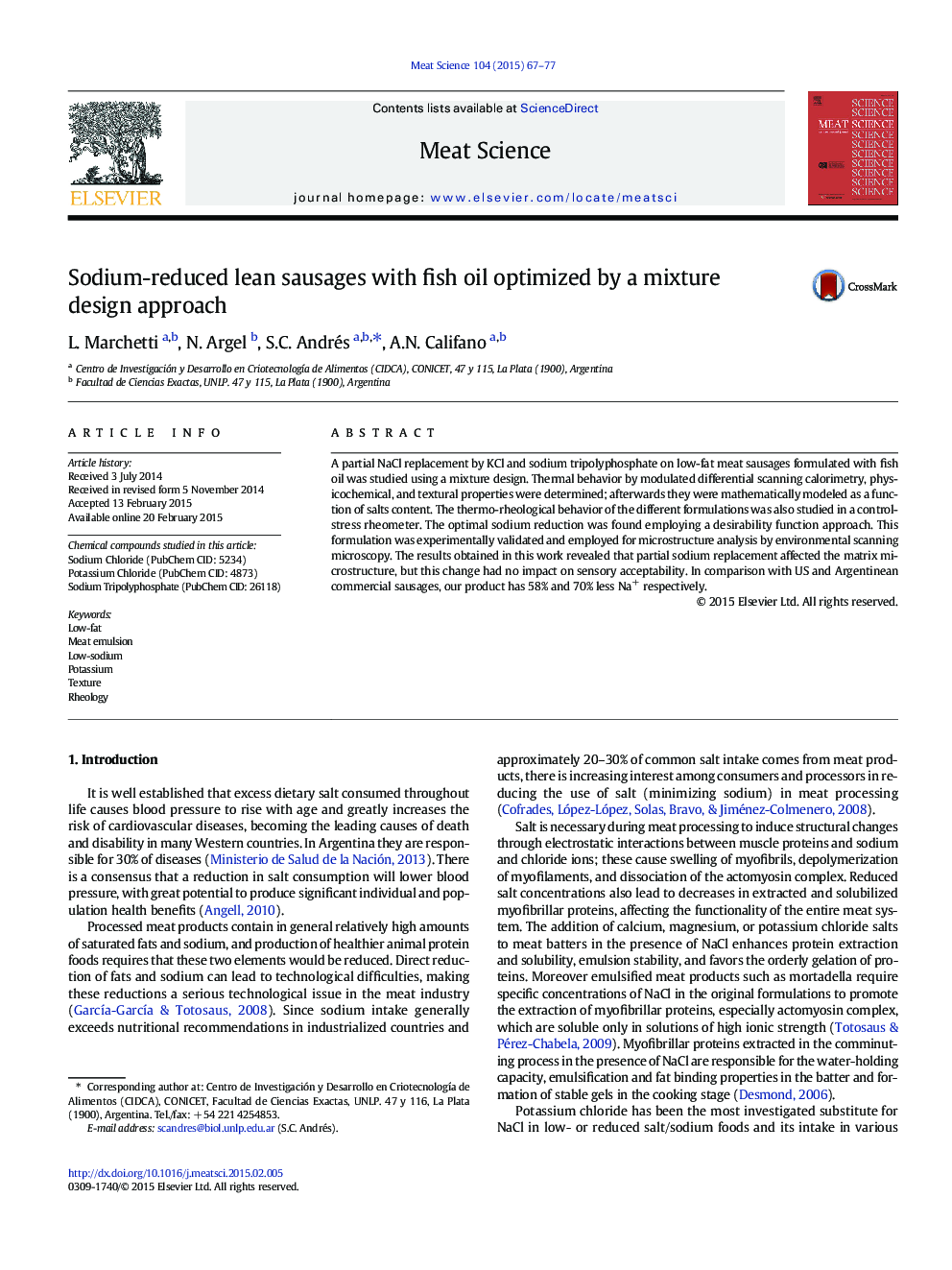| Article ID | Journal | Published Year | Pages | File Type |
|---|---|---|---|---|
| 5791224 | Meat Science | 2015 | 11 Pages |
Abstract
A partial NaCl replacement by KCl and sodium tripolyphosphate on low-fat meat sausages formulated with fish oil was studied using a mixture design. Thermal behavior by modulated differential scanning calorimetry, physicochemical, and textural properties were determined; afterwards they were mathematically modeled as a function of salts content. The thermo-rheological behavior of the different formulations was also studied in a control-stress rheometer. The optimal sodium reduction was found employing a desirability function approach. This formulation was experimentally validated and employed for microstructure analysis by environmental scanning microscopy. The results obtained in this work revealed that partial sodium replacement affected the matrix microstructure, but this change had no impact on sensory acceptability. In comparison with US and Argentinean commercial sausages, our product has 58% and 70% less Na+ respectively.
Keywords
Related Topics
Life Sciences
Agricultural and Biological Sciences
Food Science
Authors
L. Marchetti, N. Argel, S.C. Andrés, A.N. Califano,
